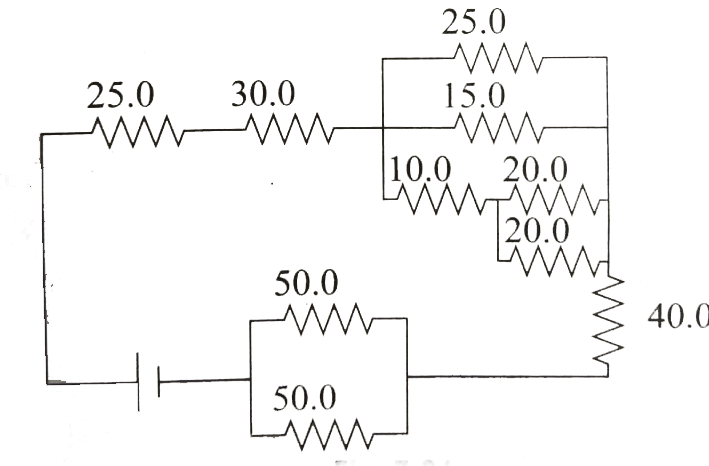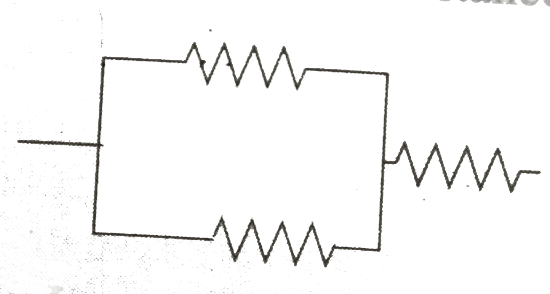The maximum power rating of a 20Ω resistor is 2.0kW. (that is this is the maximum power the resistor can dissipate (as heat) without melting or changing in some other undesirable way). Would you connect his resistor directly across a 300V d.c. source of negligible internal resistance?
Step by step video & image solution for The maximum power rating of a 20Omega resistor is 2.0kW. (that is this is the maximum power the resistor can dissipate (as heat) without melting or changing in some other undesirable way). Would you connect his resistor directly across a 300V d.c. source of negligible internal resistance? by Physics experts to help you in doubts & scoring excellent marks in Class 12 exams.
Topper's Solved these Questions
Similar Questions
The maximum power rating of a 20Ω resistor is 2.0 kW. [That is, this is the maximum power the resistor can dissipate (as heat) without melting or changing in some other undersirable way]. Would you connect this resistor directly across a 300 V d.c. source of negligible internal resistance ? Explain your answer.
View SolutionThe power of resistor is the maximum power the resistor can safely dissipate without too rise in temperature. The power rating of a 15kΩ resistor is 5.0W. What is the maximum allowable potential difference across the terminals of the resistor?
(b) A 9.0kΩ resistor is to be connected across a 120V potential difference. What power rating is required?View Solution
Knowledge Check
- Question 1 - Select One
Three 10Ω,2W resistors are connected as in Fig. 7.34. The maximum possible voltage between points AandB without exceeding the power dissipation limits of any of the resistors is
 A5√3VB3√5VC15VD53V
A5√3VB3√5VC15VD53V - Question 2 - Select One
A resistance of 25Ω is connected to 100 V, 50 Hz a.c. source. What is the maximum instanteous current in the resistor?
A6.66 AB2√2AC4√2AD4√2A
Three 200Ω resistors are connected as shown in figure. The maximum power that can be dissipated in any one of the resistor is 50 W. Find the total power in watts dissipated in the circuit for maximum voltage across the terminals A and B.
 View Solution
View SolutionIn the circuit shown in fig. 7.24 , all the resistors are rated at a maximum power of 1.00W. What is the maximum emfε that the battery can have without burning up any of the resistors?
 View Solution
View Solution(a) Two heater coils made of the same material are connected in paralled across the mains. The length of diameter of one the coil is triple that of other. Which of these will produce more heat?
(b) Three equal resistors connected in series across a source of emf together dissipated 10Wa of power. What would be the power disspated if the same resistors are connected in parallel across the same source of emf?
Two resistor R1 and R2 may be connect either in series or in parellel across a battery of zero internal resistance. it is required that joule heating for the parallel combination be four times than for series combination. if R1=100Ω find R2
(d) The three resistance A,BandC have values 3R,6R and R respectively. Now some potential difference is applied across the network . Find the ratio of thermal powers dissipated between X and Y . find ratio of power consumed by A,B,andC.
 View Solution
View SolutionEach of three resistors in fig. 7.12 has a resistance of 2Ω and can dissipate a maximum of 18W without becoming excessively heated. Find the maximum power the circuit can dissipate.
 View Solution
View SolutionA current of 2 mA was passed through an unknown resistor which dissipated a power of 4.4 W. Dissipated power when an ideal power supply of 11 V is connected across it is
View SolutionA current of 2 mA was passed through an unknown resistor which dissipated a power of 4.4 W. Dissipated power when an ideal power supply of 11 V is connected across it is
View Solution

